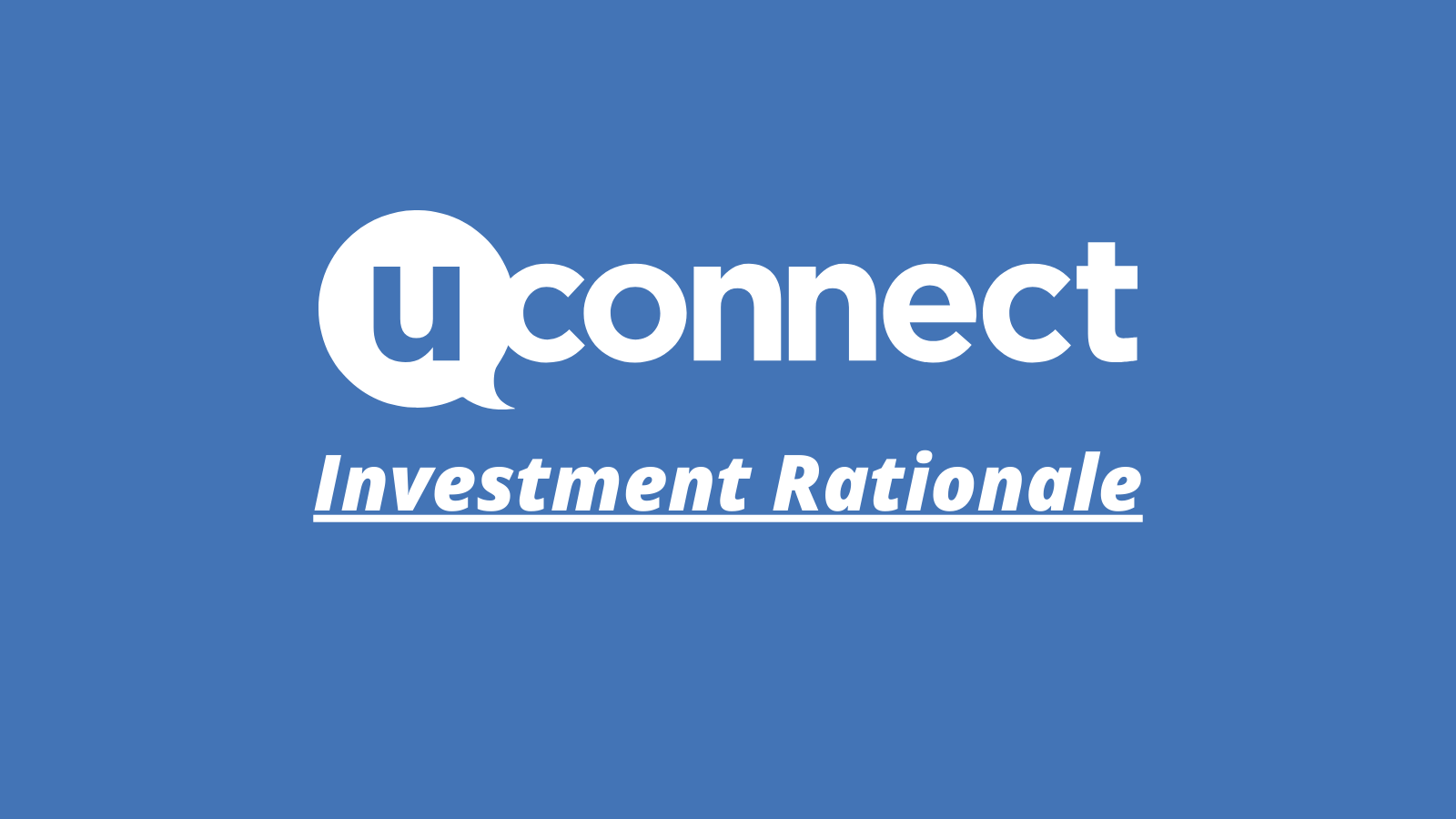Many founders start a company based on a personal or professional experience, or maybe even a calling. They encounter a problem and know that there has to be a better solution than what currently exists. They see that their life’s work, career, and personal life are all coming to a moment.
A few years ago, Katherine Wells had such an experience. Her aging parents required a multitude of care providers, and as the eldest daughter, Katherine took on a lot of the responsibility for coordinating their care. The challenges she faced in communicating and coordinating with various care providers led Katherine to look for a better option. Upon doing deep research, and interviewing over 300 people, only to learn there was a great need but no solution, she was inspired to found Serenity Engage, a HIPAA-compliant, mobile, and web collaborative conversation platform for senior care. The platform connects care teams and families to increase provider productivity, improve patient quality of life and offer families greater peace of mind regarding their loved ones.
The market for long-term senior care is large and growing fast; Americans spent $443 billion on long-term care in 2019 (half of which was spent on dementia care), and the market will grow by 10,000 baby boomers each day for the next 20 years in the United States alone. York IE sees this as strong evidence that Katherine’s experiences were not unique and will continue to be commonplace for many American families. That is why we are excited to lead Serenity Engage’s $1.25 million seed round.
Katherine’s experiences and insight are the driving forces behind Serenity Engage, and she is the leader executing on this vision as CEO of the company. Katherine is an experienced marketing executive at software companies, previously serving as vice president of marketing at Botanic Technologies, Turnkey Solutions, CodeBaby, Cofamilies, and InsightSoftware. Katherine’s sales and marketing leadership experiences make her the perfect founder to bring attention to this problem and be the face of change in the industry. She is joined on the company’s leadership team by Rob Pinna, co-founder and vice president of engineering and product. Rob is a seasoned startup executive and serial entrepreneur, having founded and led Mobilize and Software Edge, as well as more recently operating as chief product officer at IronCore Labs and CommercialTribe. Rob has also been a long-time TechStars mentor in the Boulder, Colorado area. Rob’s extensive startup and product leadership experiences make him the perfect complement to Katherine, and York IE is excited to partner with this incredible leadership team.
The Platform
Serenity Engage was developed based on Katherine’s core insight that while family members are often the decision-makers in a senior’s care plans, they are frequently excluded from the communication and coordination between care providers and patients. Serenity is a collaborative senior care platform that will serve as the source of interaction for care providers, seniors and family members, and as the source of record for families. The initial product is a HIPAA-compliant communication application that customers can use on their phone or tablets, and Serenity Engage plans to launch a browser-based app soon. The application enables family and inter-staff collaboration on appointments, activity and dining updates, telehealth, e-signatures and billing.
Serenity Engage’s user interface is structured by channels for each patient and other groups relevant to the care facilities. Many of Serenity’s customers will not only have patient channels but also channels for things like activities announcements and updates, community staff communication and dining information. This structure also allows facility managers to easily implement permission measures to ensure that personal information is kept between patients and the appropriate care providers as well as cultivate a community experience among staff and patients.
When using Serenity Engage, family members will no longer feel left in the dark regarding their relative’s care, and they will have more confidence in the environment he or she is in. Providers will also benefit from this feeling of inclusion that family members will experience. Happier patients and families will lead to higher customer satisfaction, referrals, and great reviews. This is validated by the interest in Serenity Engage shown by sales and marketing personnel at current and prospective customers. These personnel view it as an attractive selling point to potential patients and their families, and some current customers are already including in their sales and marketing materials. One customer went as far as to tell the company that, “We can attribute 15% of our new move-ins to the fact that we had Serenity to communicate.”
Other benefits that care facilities receive by using Serenity Engage are time savings and improved efficiency. The company has current customers reporting that their nurses are saving a minimum of three hours per week each, and administrators are saving up to eight hours per week. A review from one customer stated that they had saved $53,000 a year in staff productivity, giving them more time to care for patients.
One of Katherine’s top goals for Serenity Engage is that it will help address the current labor crisis occurring in care facilities. There is massive turnover of nurses at these facilities, and many nurses are leaving the profession altogether. By helping increase efficiency and improve communication in a facility, Serenity Engage also has the potential to help reduce nurse turnover. However, even if turnover remains high in a facility, Serenity Engage also provides continuity of treatment because of its function as a source of record for care providers and families.
The Company
Serenity Engage operates a traditional SaaS GTM model based on content marketing and light-touch inside sales focused on landing and then expanding customer accounts. The company is initially targeting long-term residential (assisted living) and hospice care facilities where the buyer is typically the director of nursing or whomever leads sales and marketing efforts. Serenity Engage has experienced a fairly short sales cycle, with some sales closing within a week, and the longest being six weeks. Prospective customers can sign up for a 30-day free trial to test out the platform. So far, Serenity Engage has a 100% conversion rate on proof-of-concepts.
There is also a viral element to the product and GTM, as the average user invites three additional users. This means that care providers and facilities that are not current customers of Serenity Engage get brought to the company through the use of the product by partner facilities or shared patients. The low-cost nature of this customer acquisition is extremely attractive and will create a flywheel effect, leading to exponential user growth. It also puts an emphasis on account expansion. The York IE team believes the company’s inside sales and customer success teams and product roadmap position the company to execute on a land-and-expand strategy.
Serenity Engage’s current business model is based on a very straightforward subscription fee. The company charges $10 per senior, per month. It is important to note that it is possible, if not probable, that a senior could be a patient of multiple Serenity Engage customers. Each facility will pay separately for that senior, meaning one senior could represent multiple subscriptions for Serenity Engage. This pricing model leads to an actual cash value of $12,000 for mid-market facilities (100 seniors) and $120,000 for enterprise customers with more than 1,000 patients.
The company chose to price based on the number of patients at a facility because it is easy for the customer to bake the cost into their unit economics equation. This insight into the customer is another example of Katherine’s deep understanding of the sector. It should also be said that Katherine and Rob both believe there will be opportunities to raise the price of the platform moving forward as they add more features and modules.
The Market
As previously noted, Americans spent $443 billion on long-term care in 2019, and that cost is only expected to grow as the baby boomer population continues to age. This reality has led to surging demand in home healthcare, and the inclusion of $400 billion in new spending for at-home senior care in the Biden administration’s infrastructure plan. This government expenditure is not surprising when considering the estimation that 69% of the U.S. population will require long-term care services for an average of three years. And while this government and patient spending is focused on seniors, it is important to remember that in many cases the adult children of those seniors will be the ones making the care and purchasing decisions. This demographic will expect digital interactions from care facilities to match the experiences in the rest of their daily lives.
The trends and statistics above clearly indicate a large market opportunity, but it is important to perform a bottom-up analysis to understand what portion of the long-term care spend Serenity Engage has the potential to target. To reiterate, Serenity Engage’s GTM plan is to establish a beachhead in long-term residential and hospice care facilities, and the company prices its subscription per senior, per service provider. This means that one senior can lead to multiple subscriptions from their different care providers. Based on the current price of $10 per month, per senior, the company estimates that each senior has the potential to represent $360 in annual revenue.
There are a combined 4.4 million seniors in long-term residential and hospice care facilities, so with a potential $360 of revenue generated per senior per year, the resulting initial market opportunity comes in at more than $1.5 billion. The adjacent spaces of home care (non-medical) and home -health will also find value in the Serenity Engage platform, and they represent 18.8 million seniors in the United States. With the $360 per year revenue potential for each senior, this section of the market represents a $6.6 billion opportunity. Finally, Serenity Engage believes that it will be able to monetize its future referrals and bookings functionality and estimates it could accrue 1% of the $443 billion total spend via transactional fees. Taking this $4.4 billion market opportunity from transaction fees and adding it to the market opportunity for its subscription-based platform leaves the company with a total market opportunity of approximately $13 billion.

The competitive landscape facing Serenity Engage is made up of vendors offering clinical messaging, care portal, resident platform and horizontal messaging solutions. Serenity Engage differentiates itself from each in multiple ways, but the consistent differentiator across the entire landscape is that Serenity Engage enables secure, HIPAA-compliant collaboration that crosses providers and prioritizes including the family member of a senior/patient.
Examples of clinical messaging competitors include RocketText and BloomText. These are HIPAA-compliant messaging applications designed primarily for hospitals and inter-staff communications. Serenity Engage differentiates based on its elevation of staff-to-family communications to a first-class use case and its conversational (versus clinical) naturem which is much better suited for assisted living and hospice care facilities. In fact, Serenity Engage has already displaced BloomText from a hospice facility.
Care portals include the likes of ClearCare and are old, browser-based portals with clinical origins. These are legacy solutions that lack ease of use. Serenity’s cloud-native, mobile-friendly application provides a much more modern user experience that care providers, patients, and family members appreciate and expect.
Resident platforms such as LifeLoop are arguably the most significant competitors to Serenity Engage. LifeLoop is an assisted-living-specific, multi-module SaaS platform focused on resident interactions across prospecting and operations at large facilities. Again, these platforms do not enable cross-provider communication or prioritize staff-to-family communications. These platforms are run internally at a facility and only focused on inter-facility activities.
The horizontal messaging/collaboration platforms are household names like Slack and Microsoft Teams. These companies have large sales forces, unlimited capital, and premium brands to leverage in any market they choose. However, they are horizontal platforms and not focused on specific needs of a particular industry. All of Serenity Engage’s features are developed specifically for senior care facilities — not to mention the pricing advantages Serenity Engage offers. For example, Slack only offers HIPAA compliance at a $15-per-seat price point, and that tier demands a minimum of 1,000 users. It is York IE’s belief that these large platforms will not move into the senior care space in the near future, allowing Serenity Engage to establish a market leadership position.
Katherine, Rob, and the Serenity Engage team are on a mission to change the senior care industry for the better. Through Katherine’s experiences, they have identified that seniors, their families, and care providers need, want, and deserve a better communication solution. Their passion for improving the quality of patient life, increasing the productivity of care providers, and bringing peace of mind to patient’s families is infectious, and more importantly, they are already delivering on that vision. When customers are saying, “I wish we had done this earlier! This has been a lifeline for the families of our residents,” you are onto something.
York IE is proud and excited to partner with Serenity Engage and can’t wait to see what they are able to achieve.


